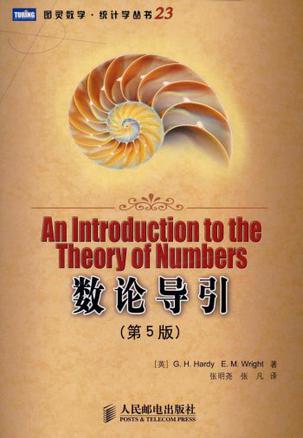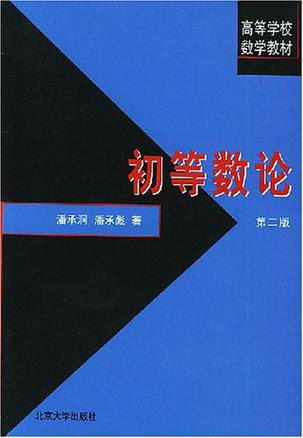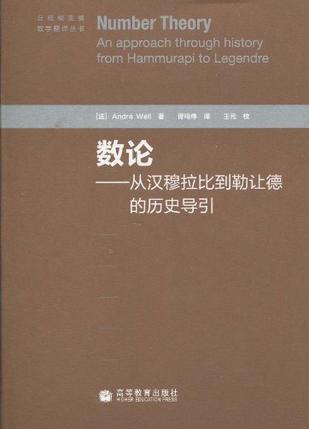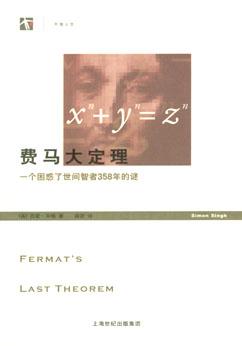基础数论
(法)Andre Weil
The first part of this volume is based on a course taught at Princeton University in 1961-62; at that time, an excellent set of notes was prepared by David Cantor, and it was originally my intention to make these notes available to the mathematical public with only quite minor changes. Then, among some old papers of mine, I accidentally came across a long forgotten manuscript by Coevally, of prewar vintage (forgotten, that is to say, both by me and by its author) which, to my taste at least, seemed to have aged very well. It contained a brief but essentially complete account of the main features of class field theory, both local and global; and it soon became obvious that the usefulness of the intended volume would be greatly enhanced if I included such a treatment of this topic. It had to be expanded, in accordance with my own plans, but its outline could be preserved without much change. In fact, I have adhered to it rather closely at some critical points.
目录
Chronological table
Prerequisites and notations
Table of notations
PART Ⅰ ELEMENTARY THEORY
Chapter Ⅰ Locally compact fields
1 Finite fields
2 The module in a locally compact field
3 Classification of locally compact fields
4 Structure 0f p-fields
Chapter Ⅱ Lattices and duality over local fields
1 Norms
2 Lattices
3 Multiplicative structure of local fields
4 Lattices over R
5 Duality over local fields
Chapter Ⅲ Places of A-fields
1 A-fields and their completions
2 Tensor-products of commutative fields
3 Traces and norms
4 Tensor-products of A-fields and local fields
Chapter Ⅳ Adeles
1 Adeles of A-fields
2 The main theorems
3 Ideles
4 Ideles of A-fields
Chapter Ⅴ Algebraic number-fields
1, Orders in algebras over Q
2 Lattices over algebraic number-fields
3 Ideals
4 Fundamental sets
Chapter Ⅵ The theorem of Riemann-Roch
Chapter Ⅶ Zeta-functions of A-fields
1 Convergence of Euler products
2 Fourier transforms and standard functions
3 Quasicharacters
4 Quasicharacters of A-fields
5 The functional equation
6 The Dedekind zeta-function
7 L-functions
8 The coefficients of the L-series
Chapter Ⅷ Traces and norms
1 Traces and norms in local fields
2 Calculation of the different
3 Ramification theory
4 Traces and norms in A-fields
5 Splitting places in separable extensions
6 An application to inseparable extensions
PART Ⅱ CLASSFIELD THEORY
Chapter IX Simple algebras
1 Structure of simple algebras
2 The representations of a simple algebra
3 Factor-sets and the Brauer group
4 Cyclic factor-sets
5 Special cyclic factor-sets
Chapter Ⅹ Simple algebras over local fields
1 Orders and lattices
2 Traces and norms
3 Computation of some integrals
Chapter Ⅺ Simple algebras over A-fields
1. Ramification
2. The zeta-function of a simple algebra
3. Norms in simple algebras
4. Simple algebras over algebraic number-fields . .
Chapter Ⅻ. Local classfield theory
1. The formalism of classfield theory
2. The Brauer group of a local field
3. The canonical morphism
4. Ramification of abelian extensions
5. The transfer
Chapter XIII. Global classfield theory
I. The canonical pairing
2. An elementary lemma
3. Hasse's "law of reciprocity" .
4. Classfield theory for Q
5. The Hiibert symbol
6. The Brauer group of an A-field
7. The Hilbert p-symbol
8. The kernel of the canonical morphism
9. The main theorems
10. Local behavior of abelian extensions
11. "Classical" classfield theory
12. "Coronidis loco".
Notes to the text
Appendix Ⅰ. The transfer theorem
Appendix Ⅱ. W-groups for local fields
Appendix Ⅲ. Shafarevitch's theorem
Appendix Ⅳ. The Herbrand distribution
Index of definitions





